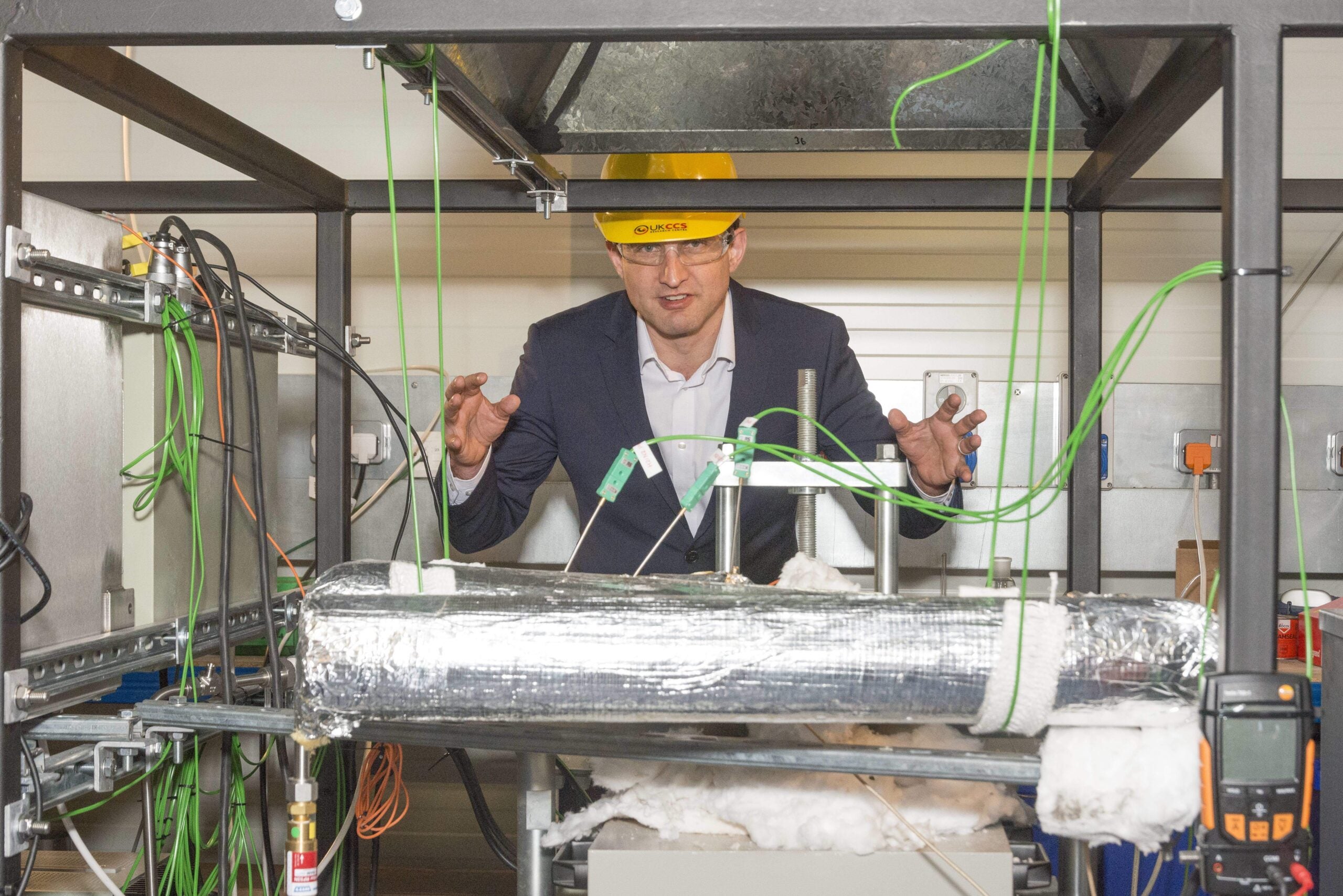
Most people agree that cutting emissions is the key to avoiding dangerous climate change but an increasing number also believe it will not be enough to stop the planet warming to 2˚C above pre-industrial levels.
According to the Intergovernmental Panel on Climate Change – a leading international body that assesses climate change – around 12 billion tonnes of carbon dioxide will soon need to be sucked from the air each year to keep global warming in check.
A number of different carbon dioxide removal techniques are designed to achieve this, forming part of a wider group of so-called geoengineering technologies. Proposals range from planting forests to burning biomass to generate energy, before capturing the released CO2 emissions underground.
Here, Patrick Kingsland speaks to Tim Kruger, the founder of a geoengineering project in Oxford, England, where natural gas is being used to generate electricity in a way that also takes carbon dioxide out of the air.
Patrick Kingsland (PK): How did you become interested in geoengineering technologies?
Tim Kruger (TK): About 11-12 years ago I was working as a management consultant and was doing a piece of research for the Carbon Trust. My role was to look at their portfolio of ideas on how we could transition to a low-carbon economy. I looked at what was there and recognised that there wasn’t enough to help us to avoid dangerous climate change.
Sure, there were technologies that could reduce emissions but we actually needed to do more than that. We needed to take CO2 out of the atmosphere. I then started looking into how this might be done and came up with various ideas that could potentially work.

US Tariffs are shifting - will you react or anticipate?
Don’t let policy changes catch you off guard. Stay proactive with real-time data and expert analysis.
By GlobalDataPK: Tell us about the idea behind Origen Power
TK: The Origen Power process feeds natural gas into a fuel cell which generates electricity. About half the chemical energy is turned into electricity and the other half is turned into high-grade heat, which is used to break down lime stain into lime and carbon dioxide, which can then be used or stored away cheaply and safely underground. Lime can also be used in a variety of different industries and will draw CO2 out of the air and environment in the process.
PK: And this process is carbon negative overall?
TK: Yes. With the Origen Power process there is less CO2 in the atmosphere at the end than there was at the outset. Usually, if you are using natural gas to generate electricity you end up emitting about 400g of CO2 per kWh generated. With the Origen Power process that figure is -600g. Every kilowatt hour of electricity you are generating you are actually withdrawing 600g of CO2 from the atmosphere.
PK: You’ve been awarded this grant from the UK Government. What are you hoping to do with it and how significant will it be in helping you push this technology forward?
TK: What this grant will allow us to do is build a prototype on that 400kW scale. That will remove about 5t of CO2 from the atmosphere per day once we build it. The first components of the plant will be built over the next year. It will take about two years to complete in total and will be built in North Lincolnshire, just south of the Humber River, at an existing lime manufacturing site.
This will essentially demonstrate the process and show that it is possible to generate electricity and takes CO2 out of the air at the same time. And the scale that we will be piloting – about 400kW – is actually quite small. There is no reason why this cannot be scaled up further.
PK: There are many different geoengineering technologies being proposed. What is different about this one?
TK: In the past, people have been quite pessimistic about the costs of these processes. But that is because they have analysed them with an assumption that the processes only have one product: taking CO2 out at the end. In fact, what you need are processes that not only take CO2 out of the air but also have co-benefits.
This means you can share the costs and economic burden across a number of different areas. With Origen Power we believe we can actually deliver CO2 from the atmosphere in an economic way.
PK: Do you think enough investment is being put into CO2 removal technologies?
TK: We need to get to net zero in the second half of this century. There is always going to be some emissions from various sectors so we are going to absolutely need to have technologies that can take CO2 out of the atmosphere.
I and others are pointing out that there is currently a discontinuity in policies. There is an objective of avoiding dangerous climate change and achieving net zero emissions but no resources going into delivering it. It is all well and good having an intention to achieve net zero but if you don’t follow it up with action it is very insincere.



